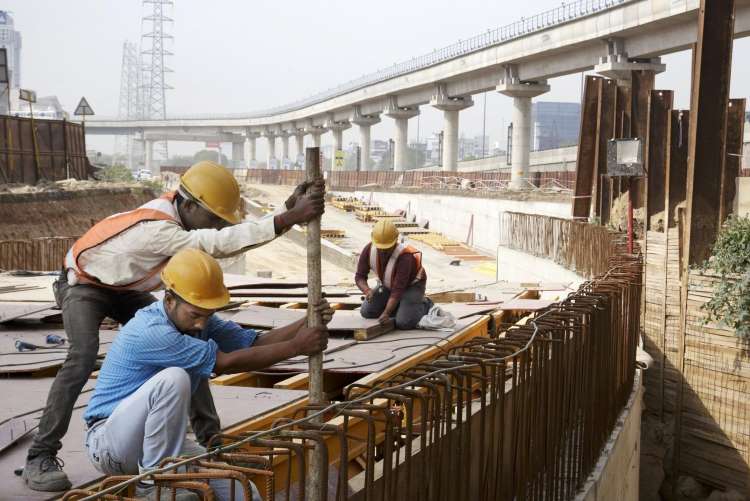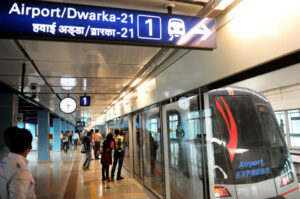
India needs to spend about 7-8% of its GDP on infrastructure. However, it spent just Rs 12.5 lakh crore on infrastructure in 2022-23, which amounts to about 4.6% of the GDP, according to CRISIL. Even this investment is primarily driven by the Union government’s capital expenditure through the Budget, with the budgeted capital expenditure in 2024-25 being Rs 11.1 lakh crore. However, not all of this is infrastructure investment as the definitions of infrastructure and capital expenditure differ.
Private participation in infrastructure (PPI) is a significant contributor to total infrastructure investment, yet it remains substantially below the levels seen in the 2008-12 period, according to the World Bank’s PPI database. Two recent high-profile cases of public private partnership (PPP) project failures (one national and one international) highlight the risks faced by the private sector in infrastructure provisioning. Despite these risks, private participation is essential for improving the efficiency of public services and augmenting infrastructure investment.
READ I Water use efficiency key to achieving multiple SDGs
Infrastructure investment success stories
The substantial returns from PPI are evident in the Indian telecom sector (from being among the world’s most expensive to the cheapest) and Delhi Airport (from being among the world’s worst to the best). Therefore, mitigating risks for the private sector is crucial for their continued transformative role in infrastructure.
The national case concerns the Delhi Airport Metro Express, a 22.7 km metro rail project connecting New Delhi’s central business district to the Delhi International Airport, built at a cost of about Rs 5,700 crore. The PPP partner for the project was Delhi Airport Metro Express Private Ltd (DAMEPL), a Special Purpose Vehicle majority-owned by Reliance Infrastructure Ltd. Although the project failed technically in 2013 (as defined by the World Bank’s PPI database) after its takeover by the public sector Delhi Metro Rail Corporation (DMRC), the Supreme Court delivered a judgment on 10 April 2024, stating that no amount is due from DMRC to DAMEPL following the project’s failure.

The Arbitration Tribunal had awarded Rs 2,782 crore plus interest (current value estimated at Rs 8,000 crore) to DAMEPL in 2017. Regardless of the Supreme Court judgment’s merits, this act has increased risks to private participation in infrastructure, as it took seven years to nullify an award, with judicial decisions overturning each other four times. This regulatory uncertainty adds to the risk premium and cost of capital, adversely impacting PPI in India, where most infrastructure services are underpriced.
The metro rail sector presents significant challenges for the private sector due to high capital costs, relatively low ridership, the desire to keep fares low, and the non-implementation of the Value Capture Finance (VCF) policy designed to internalize the externalities generated by such investments. Consequently, all metro rails in India (including DMRC, with daily footfalls exceeding three million) suffer operational losses.

To attract PPI in metro rail, there may be a need for increased viability gap funding (from the current limit of 20% of Total Project Cost to possibly 40% of TPC, as in the health and education sectors), effective implementation of the VCF policy similar to the Hong Kong Metro, fares covering at least the operational costs, and reduced regulatory uncertainty.
The international case involves the UK’s largest private water company, Thames Water, currently on the brink of failure. On 5 April, Thames Water’s parent company defaulted on £1.4 billion ($1.7 billion) of debt due to financial and regulatory concerns. Thames Water has a debt of $22.4 billion and a gearing ratio of 78%. Much of the debt is inflation-linked, but while water bills are also inflation-linked, debt payments are linked to the retail price index, which has risen ten percentage points more than the inflation measure linked to water bills since 2020. The regulatory return on capital has been squeezed (3.29% plus inflation), while environmental obligations and fines have increased costs.
Similar cost under recovery issues are widespread across Indian infrastructure sectors. In the power sector, as per the latest Power Finance Corporation report, there is a loss of 23 paise per unit of power sold, resulting in a bankrupt power distribution sector requiring government bailouts every few years.
No Indian city has a 24/7 water supply, highlighting the need for PPI to enhance efficiency and investment resources. To achieve good quality infrastructure services (including water supply), it is necessary to pay reasonable user charges that cover at least the operation and maintenance costs of the infrastructure assets. This recommendation, made by successive Finance Commissions and the Expenditure Reforms Commission, remains unimplemented across sectors. A comparison of the state of electricity and water services in Delhi illustrates the importance of private participation in infrastructure.
(Kumar V Pratap is a former Joint Secretary (Infrastructure Policy & Finance), Ministry of Finance, Government of India and author of Infrastructure Financing in India (Oxford University Press, 2024). Views are strictly personal.)
